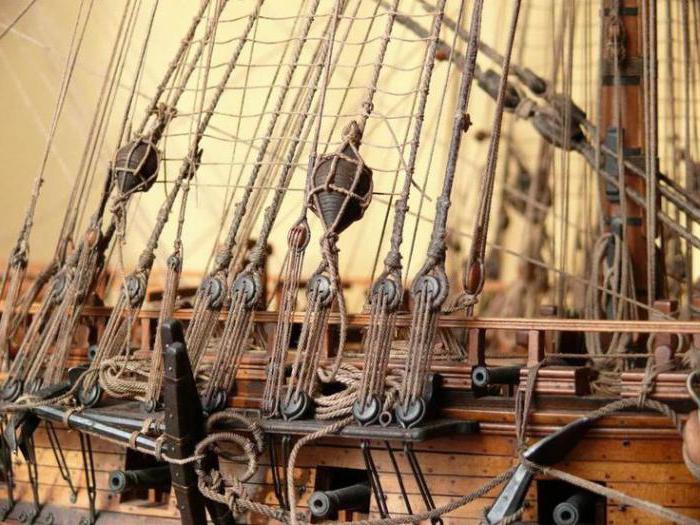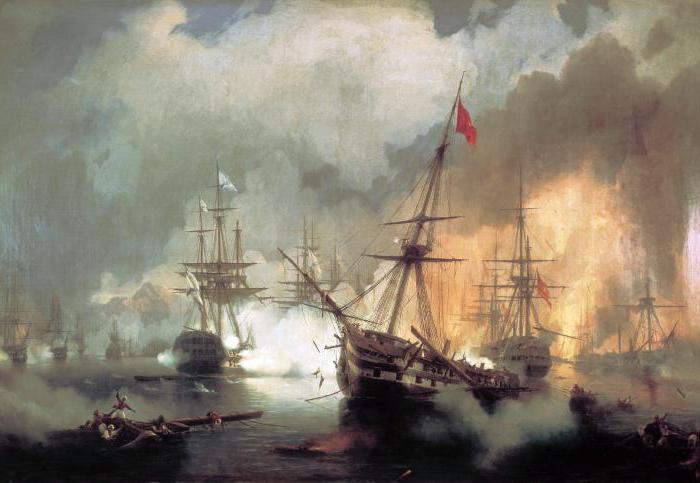In June 1712, the first ship left the newly constructed slipways of the St. Petersburg Admiralty. It was the battleship “Poltava”, equipped with 54 guns and representing at that time a very formidable force. It was named in memory of the victory over the Swedes in the famous battle that took place on June 27, 1709. For two decades ─ until the end of the Northern War ─ Poltava, along with other ships of the Baltic Fleet, carried out various combat missions and participated in six naval campaigns.
Fleet Background
The construction of the domestic navy was preceded by a number of important victories during the Northern War. So, thanks to the capture of the Swedish fortresses Nyenschanz and Noteburg, Russia got access to the Baltic Sea. In order to maintain their positions, on the orders of Peter I, two new citadels were laid, one of which, being built on the Zayachy island of the Neva, became the “cradle” of the future capital ─ St. Petersburg, and the second ─ on the rocks of Kotlin in the Gulf of Finland, was called Kronshlot and turned over time into a powerful fortification.
However, without a strong and efficient squadron, these measures were insufficient. The first fleet of Peter the Great was created at the Olonets and Novoladozh shipyards. Four battleships were launched from their slipways: Vyborg, Riga, Pernov, and another one that remained nameless. The main drawback of these vessels was that, with sufficiently powerful artillery weapons, in their design they did not meet the technical requirements of that time and did not have sufficient seaworthiness. Thus, the Russian Navy needed urgent modernization.
Bookmark a new vessel
For this purpose, at the end of 1709, the ship foreman Fedosey Moiseevich Sklyaev developed a project for a new 54-gun battleship, later called the Poltava. It is known that sovereign Peter I personally participated in the creation of the project. As the study of the technical documentation preserved in the archives shows, their brainchild was based on the progressive achievements of not only domestic but also foreign shipbuilding at that time.
The solemn laying of the ship "Poltava" was made on December 5 (16), 1709 by the sovereign himself. To avoid delays, long before this day, various supplies were brought from various cities of the country to the Admiralty Shipyard, among which were stockpiles of parts of the future ship, as well as iron and other necessary materials. Peter I appointed F. M. Sklyaev as the builder of Poltava, but, with all the trust in him, he personally supervised the work that was being done, during which he often gave very valuable and practical instructions.
Eternal Russian troubles
However, it was not without the usual headache in such cases. For example, from the message of Admiral General F.M. Apraksin to the Admiralty Order, it is known that negligent officials not only did not fully fulfill the order for the supply of hemp necessary for caulking the ship’s hull, but the one that was received turned out to be rotten and not fit for business. In addition, it turned out that most carpenters, accustomed to erecting huts and churches, could not cope with a new job for them. I had to urgently look for a replacement among foreigners who came to Russia. This caused additional delays.
Norwegian Admiral K.I. Kruys, who was in Russian service, also reported to Count Apraksin on a number of shortages, and sometimes obvious thefts, for which he considered the governor of St. Petersburg, His Grace Prince A. D. Menshikov. However, due to the proximity of the latter to the emperor, it was impossible to put an end to his illegal actions. However, when did mother Russia do without it?
Replenishment of the Baltic squadron
At the end of winter 1711-1712 the bulk of the work was completed, and it was planned to launch the ship in April, but for a number of reasons this celebration had to be postponed for two months. As a result, the Poltava ship first rocked on the Neva waves only on June 15 (28), 1712. The ceremony was attended by Sovereign Peter Alekseevich with his whole family.
At the end of August of the same year, the vessel, which became a worthy replenishment of the Russian navy, left the Admiralty berth and headed to Kronstadt for final completion and equipping with everything necessary. There were also other ships of Peter 1, designed to carry out military operations in the Baltic. At the stern of Poltava, the sea flag of St. Andrew was hoisted, the sketch of which the king approved in 1711.
Some features of the new ship
From the description of the Poltava ship, preserved in the Admiralty’s archive, it is known that according to its characteristics it corresponded to the IV rank of the ship classification system adopted in Britain and then the international standard. The length of its hull was 39.8 m, and the width was 11.7 m. With a depth of holds of 4.6 m, the displacement reached 1200 tons.
As mentioned above, the armament of the ship included 54 guns, and those on the lower deck were those that had the largest caliber. The mass of their cores was 8.8 kg. At a higher level, as well as on the dowels ─ the deck and the platform in the stern of the ship, ─ guns were placed that were smaller, and, accordingly, inferior to them with firepower.
Decor glorifying military victories
In accordance with the traditions of that era, the ship "Poltava" had a rich decorative decoration, as evidenced by the engraving of the artist Picart, who was a contemporary of events, presented in the article. In addition, a number of surviving documents give a fairly complete picture. From them it is clear that the allegorical composition that adorned the sides of the ship was intended to sing the victory of the Russian army in the Battle of Poltava and the role that the emperor played in it. Two mirrored figures of St. George the Victorious corresponded to the same purpose. In that era, not only the ships of Peter 1, but also ships belonging to other fleets of the world, were often decorated with decorative elements, which contained a certain ideological subtext.

The crew of the ship varied depending on the tasks assigned to it. It was the largest during offensive operations and reached 400 people, while three hundred were enough to ensure defense. The team consisted of only 6 officers, the rest of the crew consisted of lower ranks and ordinary sailors.
The beginning of the battle path
As already noted above, the Poltava ship was able to participate in 6 naval campaigns of the Northern War. The first of them began for his crew in May 1713, when the ship as part of the squadron of Admiral Kruys was sent to carry out combat duty in the northern region of the Gulf of Finland. In mid-June, the Emperor himself aboard the ship, arriving for personal acquaintance with the progress of the tasks. In the following months, Poltava participated in several military operations and was temporarily part of the squadron of Revel’s naval base.

During the campaign of 1714, the crew of the ship was given the duty to cover from the left flank the actions of the Russian galley fleet off the coast of the Gangut Peninsula. In addition, evidence remains of the many days of pursuit by Poltava and several other Russian ships of the Swedish squadron, captured at the Birch Islands in the northern waters of the Gulf of Finland. Despite the fact that the enemy still managed to escape from the chase, the very fact that the Russians managed to put him to flight was very, very encouraging.
Relations with Allies
The following year, Poltava left the Kronstadt berth only in mid-July, and by order of the sovereign took part in joint operations with the allied Anglo-Dutch squadron under the command of Admiral D. Noris. After completing the tasks, the ship was sent to Revel, where its crew spent the winter months.
Throughout the campaign of 1716, the ship performed various tasks in cooperation with the fleets of the allied states of Russia: Holland, Denmark and England. Then a number of repair and maintenance work was carried out, and then Poltava went to the port of Copenhagen, where at that time there were several more ships of the Russian fleet. The following year, the crew of the ship distinguished itself during the landing on the island of Gotland, as well as in a number of operations carried out near the Swedish coast.
Recent years of operation of the ship
In the subsequent period, the crew continued to perform various tasks assigned by the Admiralty. In July 1721, the ship almost died, being at the epicenter of a strong storm that swept the northwestern part of the Baltic Sea, and was seriously damaged. As a result, upon arrival at Revel, it was docked for repairs.
"Poltava" completed its combat journey as a training vessel, on which in the period 1723-1724. Young fleet officers were practicing. This was the final stage of sailing of the first military vessel launched from the stocks of the St. Petersburg shipyard. A year later, an order was issued to remove from him the guns that had been transferred to the new, just-built frigate "Moscow". The venerable veteran himself spent a long time at the docks of Kronstadt, after which, having come to complete decay, he was dismantled.